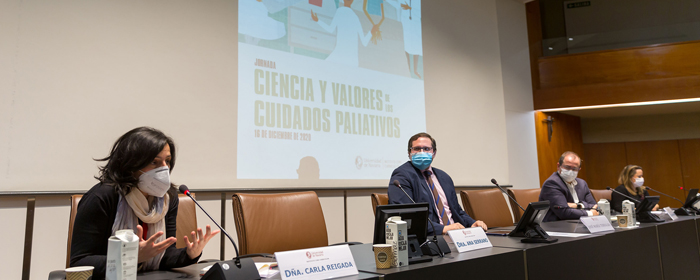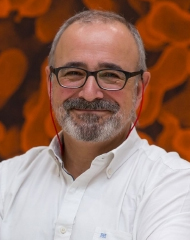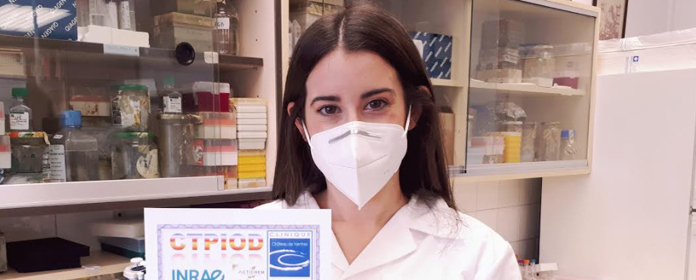Diego Caro, graduate of School of Architecture, tells his professional experience in Asia.
His first destination was the Kengo Kuma & Associates studio in Tokyo, and then he made the leap to Beijing.
After graduating in Architecture from the University of Navarra, Diego Caro decided to take his first professional steps in Asia. His initial destination was Tokyo, where he made his 'debut' as an architect at Kengo Kuma & Associates. He then moved to China, where he currently works at Vector Architects.
Why did you decide to try your luck in Asia when you finished degree program?
I like to travel, I am very interested in getting to know new places and Asia is a continent that is very attractive to me and that currently offers many professional opportunities. The current economic situation in Spain, status , fuels even more this spirit of exploration. I have to say, however, that without the crisis I would have left just the same.
I am lucky that the profession of architect, due to the universality of the graphic language we use, offers us many more facilities to work abroad than other professions.
I have worked in Japan and China, completely different countries and paradoxically with a great rivalry between them. The former offered me the opportunity to work in one of the best offices in the world. The quality of Japanese architecture is impressive, they produce projects of exquisite constructive definition. I learned a lot there. In addition, there were many aspects of their culture that I wanted to experience firsthand.
China, on the other hand, offered me a society in which I could identify myself a little more; the possibility of developing and building my own projects in record time; and being able to live without the constraints of Tokyo (although without any luxury subject ).
What were your first professional steps in Tokyo?
I worked as scholarship recipient in the office of Kengo Kuma & Associates. It was a brief but very intense experience. There I was lucky to meet very good architects and work in an office with a lot of resources. The workshop was about 14 hours a day, minimum, often including weekends. The perception of work in an office like that is completely different from what I was used to before. It may sound crazy, but I really enjoyed it.
Also, I find that as an architect, living in a city like Tokyo and walking its streets is very enriching.
 |
| Diego Caro, with his colleagues in the studio. |
When did you decide to take the leap to Beijing?
You could say that it was largely by chance. After my time in Tokyo, I decided to spend a few days in Beijing before returning home. I had already done an internship there three years ago and I took the opportunity to visit the city again and say hello to former colleagues.
Once there, a friend put me on contact with my current bosses. They had just won a award and I went to one of their conferences. From the first moment there was a very good connection, the subject architecture they are pursuing and the way they work was a good fit for me. They offered me work and I decided to stay.
What projects have you worked on there?
In Beijing I started working as an architect for Vector Architects where I am still working a year later, now as an associate architect. Throughout this period I have worked on several projects with very different scales: from a small pavilion in the city of Kunshan, whose construction is about to be completed, to a master urban plan of about 400,000 square meters built including an artists' district and a museum in the city of Wuhan that we are currently developing.
In a country like China, if you want to survive as an office you have to carry out large-scale projects like the last one I mentioned in Wuhan. Despite this, in my office we are lucky to have clients (not many) willing to do small high quality projects with which we can go into more detail and control better.
I have recently collaborated on my own with an NGO for the restoration and conversion of an old house into the headquarters of that organization, reading club and exhibition conference room . It has been a very small project , but we are very happy with the result.
What is work like there?
Working in China is hard. The pace of work is very different from Spain and there is little room for reflection. In this exacerbated growth, quantity (and speed) is much more important than quality. This extends to all fields, not just architecture. While this is happening, and has happened in Spain as well, in all economies with rapid economic growth, the dimensions in China of this phenomenon are multiplying exponentially.
Thus, during the dialogue with clients it is not easy to reach joint decisions and procedures are somewhat chaotic. There have been cases in which we have been commissioned to carry out a major urban planning project project without having carried out a prior study of marketing, economic feasibility, etc. And we have often had to restart projects due to drastic changes in the project.
The next big problem, once the final decisions have been made and project has been realized, is to achieve the expected result during construction.
Is language a barrier?
Leaving aside the fact that all my colleagues are Chinese and that I am not yet fluent in language, I must say that from their language derives a way of thinking and proceeding in the face of problems very different from ours.
Chinese is a very abstract language , difficult to use for technical work. It is curious to observe how communication problems also arise among them. In this sense, the exchange can be quite interesting, but you have to be patient.
What is the perception of Spanish architects in Asia?
In general we are well valued. We are often described as architects who look for simple solutions, guided by common sense, but "with feeling". In our buildings you can feel the energy of the architect behind it.
Chinese architects are in love with Spanish cities, especially Barcelona. They refer to it by talking about that "life" behind the buildings and, of course, the paella (laughs).
Would you recommend young Spanish architects to look for professional opportunities in Asia?
Of course, and not only in China, there are many other countries in Asia such as Vietnam or Indonesia with a great future for architects.
I think you have to be open to new destinations. The supply of foreign architects in cities like Beijing or Shanghai has increased a lot in the last years and this makes that our "value" has decreased. The conditions offered now are not what they were five years ago. The focus of development is shifting to other, somewhat lesser known areas of the country where great opportunities are emerging.
I have to say that it is often not easy to be so far from home and for me the support of my family has been, and continues to be, very important. Sometimes, living in a city the size of Beijing surrounded by so many people with whom you can't communicate, makes you feel in a kind of parallel, fictitious world and this often makes you take refuge in work.
Despite this, the experience can be very rewarding if you know how to enjoy it.
What projects do you have for the future?
The truth is that there are different possibilities open and I still have decisions to make, but I have always thought that, when in doubt, the option to follow is to work hard. So, for the moment, that's what I'm going to do in my current office. It has taken me a long time to get here and adapt to life in Beijing, now it is time to enjoy this status and the projects.
Despite this, I do not forget Spain and I always have in my mind the idea of returning. I would like to be able to open my own office there in a few years. I think this period is essential in terms of training and international networking with architects, as I will most likely have to continue to carry out projects abroad.
On the other hand, for me it is very important to be at contact with university life where there is much more space for study and reflection. I would very much like to be able to continue to be linked to it.




